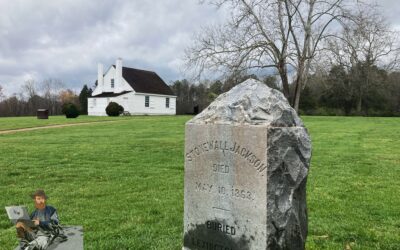EDITORS NOTE: This is a guest post by Elaine Hirsch
Health and Medicine During the Civil War
From 1861 to 1865, the Civil War wreaked havoc on American life. Nearly 620,000 soldiers died and an additional 412,000 were wounded. The massive amount of injuries presented new challenges in the medical field. Hospitals and clinics were overwhelmed with patients, the disease was rampant and sanitation practices were nowhere near as sophisticated as today’s standards. Standardized medical schools did not yet exist and there were less than 100 doctors in the army at the start of the war. These factors presented unique challenges that American hospitals were not prepared to meet. The National Museum of Civil War Medicine features a collection of online videos and resources to bring to life a medical world that we cannot imagine living in today.
At the war’s onset, the Union had not yet established its own hospitals and most public hospitals at the time were rat-infested, dirty, and plagued by diseases like smallpox. Soldiers had to rely on makeshift field hospitals to heal their wounds. Later, general hospitals were established near battlefields in civilian buildings like churches, schools, houses and farms.
According to the Colonel Eli Lilly Civil War Museum, injured soldiers were threatened by more than just the pain of their wounds. Many soldiers had never been exposed to diseases like chicken pox, the mumps or measles and were therefore more susceptible to this inflictions while being treated at unsanitary hospitals. At the time, doctors did not yet understand how many diseases were spread and used contaminated instruments on patients. Today, strict sanitation guidelines reduces the risk of spreading diseases and infection, but this knowledge was unavailable during the Civil War.
Antibiotics now save millions of lives each year but were not available in the 19th century. Doctors performed surgeries without gloves, used bare fingers to inspect wounds and simply wiped instruments clean using their aprons. Due to these practices and the infections they caused, the National Museum of Civil War Medicine calculated that over half the casualties incurred were a result of disease, not gunshots or bayonet wounds.
Medical jargon was also different during the Civil War. Doctors spoke of mania instead of insanity, lung fever instead of pneumonia and jail fever instead of typhus. Clearly, legitimate medical transcription services were not available at the time. Syphilis was simply called pox, rickets was used to describe any problem with the skeletal system and any day-long illness was called diary fever. Lead poisoning was called dropsy, circulatory problems were attributed to flux of humor and anemia was known as green sickness. These now outdated terms reflect the uncertainty and lack of knowledge held by the medical community at the time.
While medical technology and knowledge have certainly improved since the Civil War, the National Museum of Civil War Medicine asserts that some 19th century practices are still used during warfare today. Medical professionals working out of field hospitals are still often the first responders to emergencies and evacuating wounded soldiers is a priority now as it was then. Lessons learned during the Civil War about keeping adequate medical supplies on hand are still valid today. These lessons contributed greatly to the advancement of medical knowledge and influenced the way we now practice medicine both on war fields and in civilian hospitals.



more pictures!!!!!!!!!!!!!!! project due! ahhhh!
yes im doing a project in my school on a lot of history feature articles and its kind of difficult, and this site and events help a lot.
more pictures!!!!!!!!!!!!!!!!!!! project due! ahhhh!
this helped me get great useful information for a school project
Awesome! Helped a lot! Lots of useful facts to use for my paper!
what was the name of the plant that wounded soldiers would stuff or swallow to keep external or internal wounds from infection ? thank you for your time Raymond
Thanks for sharing this informative blog.